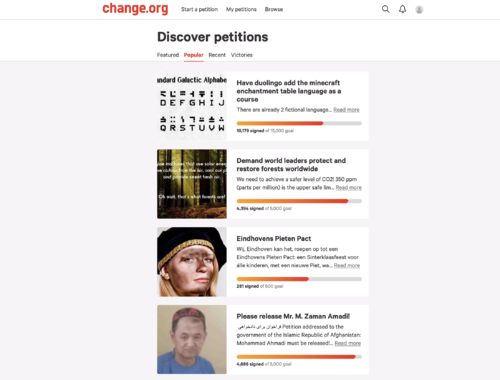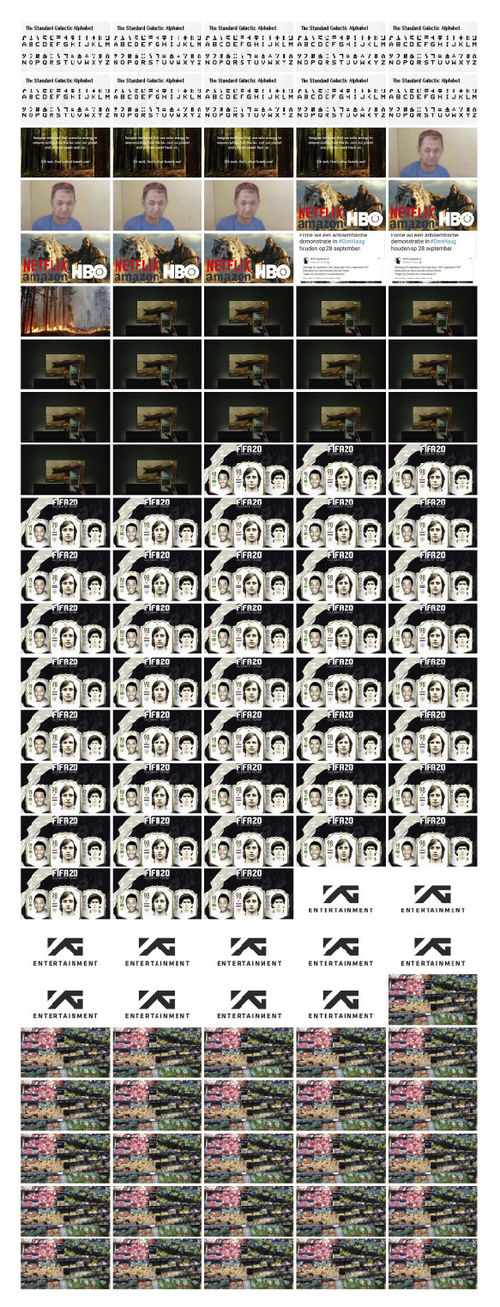User:Zpalomagar/HACKPACT: Difference between revisions
Zpalomagar (talk | contribs) |
Zpalomagar (talk | contribs) |
||
| Line 18: | Line 18: | ||
Each emoji represent 1 million of citizens so the strategy used to display the information is repetition in the same way as I did in the previous example. | Each emoji represent 1 million of citizens so the strategy used to display the information is repetition in the same way as I did in the previous example. | ||
Netherlands Population | |||
1952🥪🥪🥪🥪🥪🥪🥪🥪🥪🥪 | |||
1957🥪🥪🥪🥪🥪🥪🥪🥪🥪🥪🥪 | |||
1962🥪🥪🥪🥪🥪🥪🥪🥪🥪🥪🥪 | |||
1967🥪🥪🥪🥪🥪🥪🥪🥪🥪🥪🥪🥪 | |||
1972🥪🥪🥪🥪🥪🥪🥪🥪🥪🥪🥪🥪🥪 | |||
1977🥪🥪🥪🥪🥪🥪🥪🥪🥪🥪🥪🥪🥪 | |||
1982🥪🥪🥪🥪🥪🥪🥪🥪🥪🥪🥪🥪🥪🥪 | |||
1987🥪🥪🥪🥪🥪🥪🥪🥪🥪🥪🥪🥪🥪🥪 | |||
1992🥪🥪🥪🥪🥪🥪🥪🥪🥪🥪🥪🥪🥪🥪🥪 | |||
1997🥪🥪🥪🥪🥪🥪🥪🥪🥪🥪🥪🥪🥪🥪🥪 | |||
2002🥪🥪🥪🥪🥪🥪🥪🥪🥪🥪🥪🥪🥪🥪🥪🥪 | |||
2007🥪🥪🥪🥪🥪🥪🥪🥪🥪🥪🥪🥪🥪🥪🥪🥪 | |||
<source lang="python"> | <source lang="python"> | ||
import pandas as pd | import pandas as pd | ||
import emoji | import emoji | ||
data = pd.read_csv ('countries.csv') | data = pd.read_csv ('countries.csv') | ||
netherlands = data[data.country == 'Netherlands'] | |||
l_netherlandspopulation = list(netherlands.population / 10**6) | |||
l_netherlandsyear = list(netherlands.year) | |||
print(" | print("Netherlands Population") | ||
n=0 | n=0 | ||
l=0 | l=0 | ||
while l<len( | while l<len(l_netherlandspopulation): | ||
print( | print(l_netherlandsyear[n], end = '') | ||
for i in range(int( | for i in range(int(l_netherlandspopulation[n])): | ||
print(emoji.emojize(": | print(emoji.emojize(":sandwich:"), end="") | ||
print() | print() | ||
n=n+1 | n=n+1 | ||
| Line 70: | Line 73: | ||
2002💃💃💃💃💃💃💃💃💃💃💃💃💃💃💃💃💃💃💃💃💃💃💃💃💃💃💃💃💃💃💃💃💃💃💃💃💃💃💃💃<br> | 2002💃💃💃💃💃💃💃💃💃💃💃💃💃💃💃💃💃💃💃💃💃💃💃💃💃💃💃💃💃💃💃💃💃💃💃💃💃💃💃💃<br> | ||
2007💃💃💃💃💃💃💃💃💃💃💃💃💃💃💃💃💃💃💃💃💃💃💃💃💃💃💃💃💃💃💃💃💃💃💃💃💃💃💃💃<br> | 2007💃💃💃💃💃💃💃💃💃💃💃💃💃💃💃💃💃💃💃💃💃💃💃💃💃💃💃💃💃💃💃💃💃💃💃💃💃💃💃💃<br> | ||
Cuba Population<br> | |||
1952🌴🌴🌴🌴🌴🌴<br> | |||
1957🌴🌴🌴🌴🌴🌴<br> | |||
1962🌴🌴🌴🌴🌴🌴🌴<br> | |||
1967🌴🌴🌴🌴🌴🌴🌴🌴<br> | |||
1972🌴🌴🌴🌴🌴🌴🌴🌴<br> | |||
1977🌴🌴🌴🌴🌴🌴🌴🌴🌴<br> | |||
1982🌴🌴🌴🌴🌴🌴🌴🌴🌴<br> | |||
1987🌴🌴🌴🌴🌴🌴🌴🌴🌴🌴<br> | |||
1992🌴🌴🌴🌴🌴🌴🌴🌴🌴🌴<br> | |||
1997🌴🌴🌴🌴🌴🌴🌴🌴🌴🌴<br> | |||
2002🌴🌴🌴🌴🌴🌴🌴🌴🌴🌴🌴<br> | |||
2007🌴🌴🌴🌴🌴🌴🌴🌴🌴🌴🌴<br> | |||
Revision as of 17:13, 27 September 2019
#H1_CHALLENGE CHANGE.ORG DISPLAY
The starting point of this proposal is looking for online spaces where people or communities can publish their suggestions or requests. Taking as reference one of the most important platforms all over the world in order to achieve this goal(change.org), this hackpact develop an experiment challenging the display of the conventional structure that is followed in the platform. In order to work with visual content, I’m going to extract just the visual elements that are display in the website (you can only update one picture on each petition).
The traditional representation method introduced by Otto Neurath ,when isotypes were created, said that in order to facilitate the lecture and comparison of quantitative data, you must repeat an item as many times as you need proportionally to the amount it represents. In this example each photo represents 1000 people supporting a petition.
With this alternative HTML structure the information that is transmitted to the reader is purely visual and you can infer people interest just with a glance and notice the difference in support and relevance between them.
#H2_LOOKING AT THE WORLD WITH EMOJIS
This hackpact has the goal of experimenting python as a tool to read data (cdv files) and visualise it. The database used for this experiment is a cdv file with population of every country in different years. With this piece of code we can read this data and create lists of the information that we are interested in. With this translation of data we are able to extract this quantitative information and work with that as if it was a python element.
I am going to use two additional libraries for python. On the one hand pandas library in order to read data from the cdv file and on the other emoji library to use the universal emoji library for visualise the result.
Each emoji represent 1 million of citizens so the strategy used to display the information is repetition in the same way as I did in the previous example.
Netherlands Population 1952🥪🥪🥪🥪🥪🥪🥪🥪🥪🥪 1957🥪🥪🥪🥪🥪🥪🥪🥪🥪🥪🥪 1962🥪🥪🥪🥪🥪🥪🥪🥪🥪🥪🥪 1967🥪🥪🥪🥪🥪🥪🥪🥪🥪🥪🥪🥪 1972🥪🥪🥪🥪🥪🥪🥪🥪🥪🥪🥪🥪🥪 1977🥪🥪🥪🥪🥪🥪🥪🥪🥪🥪🥪🥪🥪 1982🥪🥪🥪🥪🥪🥪🥪🥪🥪🥪🥪🥪🥪🥪 1987🥪🥪🥪🥪🥪🥪🥪🥪🥪🥪🥪🥪🥪🥪 1992🥪🥪🥪🥪🥪🥪🥪🥪🥪🥪🥪🥪🥪🥪🥪 1997🥪🥪🥪🥪🥪🥪🥪🥪🥪🥪🥪🥪🥪🥪🥪 2002🥪🥪🥪🥪🥪🥪🥪🥪🥪🥪🥪🥪🥪🥪🥪🥪 2007🥪🥪🥪🥪🥪🥪🥪🥪🥪🥪🥪🥪🥪🥪🥪🥪
import pandas as pd
import emoji
data = pd.read_csv ('countries.csv')
netherlands = data[data.country == 'Netherlands']
l_netherlandspopulation = list(netherlands.population / 10**6)
l_netherlandsyear = list(netherlands.year)
print("Netherlands Population")
n=0
l=0
while l<len(l_netherlandspopulation):
print(l_netherlandsyear[n], end = '')
for i in range(int(l_netherlandspopulation[n])):
print(emoji.emojize(":sandwich:"), end="")
print()
n=n+1
l=l+1
- Some other countries:
Spain Population
1952💃💃💃💃💃💃💃💃💃💃💃💃💃💃💃💃💃💃💃💃💃💃💃💃💃💃💃💃
1957💃💃💃💃💃💃💃💃💃💃💃💃💃💃💃💃💃💃💃💃💃💃💃💃💃💃💃💃💃
1962💃💃💃💃💃💃💃💃💃💃💃💃💃💃💃💃💃💃💃💃💃💃💃💃💃💃💃💃💃💃💃
1967💃💃💃💃💃💃💃💃💃💃💃💃💃💃💃💃💃💃💃💃💃💃💃💃💃💃💃💃💃💃💃💃
1972💃💃💃💃💃💃💃💃💃💃💃💃💃💃💃💃💃💃💃💃💃💃💃💃💃💃💃💃💃💃💃💃💃💃
1977💃💃💃💃💃💃💃💃💃💃💃💃💃💃💃💃💃💃💃💃💃💃💃💃💃💃💃💃💃💃💃💃💃💃💃💃
1982💃💃💃💃💃💃💃💃💃💃💃💃💃💃💃💃💃💃💃💃💃💃💃💃💃💃💃💃💃💃💃💃💃💃💃💃💃
1987💃💃💃💃💃💃💃💃💃💃💃💃💃💃💃💃💃💃💃💃💃💃💃💃💃💃💃💃💃💃💃💃💃💃💃💃💃💃
1992💃💃💃💃💃💃💃💃💃💃💃💃💃💃💃💃💃💃💃💃💃💃💃💃💃💃💃💃💃💃💃💃💃💃💃💃💃💃💃
1997💃💃💃💃💃💃💃💃💃💃💃💃💃💃💃💃💃💃💃💃💃💃💃💃💃💃💃💃💃💃💃💃💃💃💃💃💃💃💃
2002💃💃💃💃💃💃💃💃💃💃💃💃💃💃💃💃💃💃💃💃💃💃💃💃💃💃💃💃💃💃💃💃💃💃💃💃💃💃💃💃
2007💃💃💃💃💃💃💃💃💃💃💃💃💃💃💃💃💃💃💃💃💃💃💃💃💃💃💃💃💃💃💃💃💃💃💃💃💃💃💃💃
Cuba Population
1952🌴🌴🌴🌴🌴🌴
1957🌴🌴🌴🌴🌴🌴
1962🌴🌴🌴🌴🌴🌴🌴
1967🌴🌴🌴🌴🌴🌴🌴🌴
1972🌴🌴🌴🌴🌴🌴🌴🌴
1977🌴🌴🌴🌴🌴🌴🌴🌴🌴
1982🌴🌴🌴🌴🌴🌴🌴🌴🌴
1987🌴🌴🌴🌴🌴🌴🌴🌴🌴🌴
1992🌴🌴🌴🌴🌴🌴🌴🌴🌴🌴
1997🌴🌴🌴🌴🌴🌴🌴🌴🌴🌴
2002🌴🌴🌴🌴🌴🌴🌴🌴🌴🌴🌴
2007🌴🌴🌴🌴🌴🌴🌴🌴🌴🌴🌴


